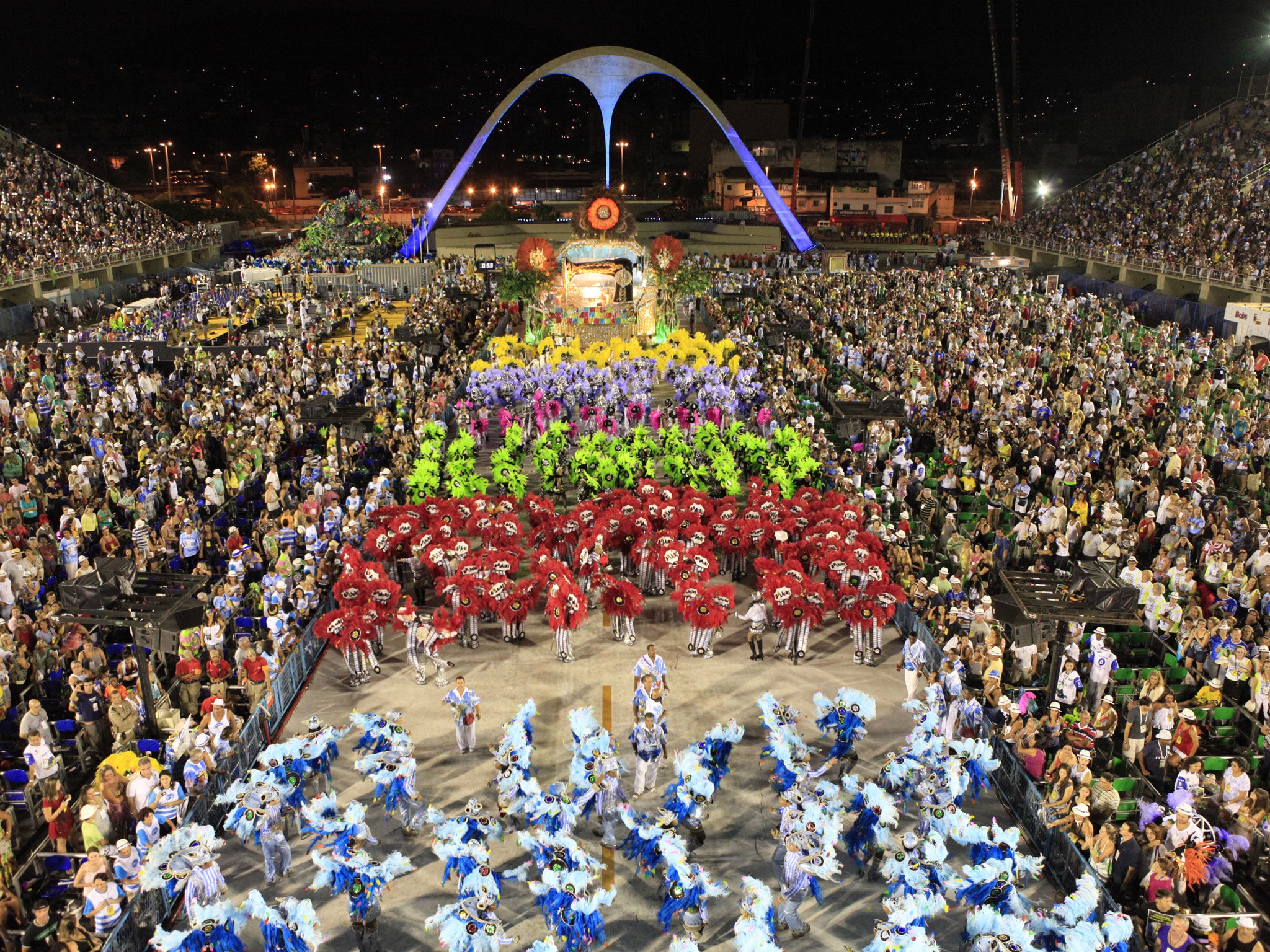It’s entirely possible to enjoy Rio Carnival on a budget.
The Rio Carnival is a spectacular event. There are lots of flaws and areas for improvement, but as far as events go… it’s unforgettable. Even if you’re prepared for the noise, the smell, the heat and the general madness, it would be a miracle if you didn’t feel overwhelmed.

Rio Carnival is the biggest street party on the planet and it’s a time when social norms are forgotten and people really let loose.
But the biggest party on the planet doesn’t have to cost you a fortune. It’s entirely possible to enjoy Rio Carnival on a budget.
Dating back to the 19th century, Carnival is a mix of European Masquerade Balls and African tribal traditions. Paying homage to their gods, the African slaves would dress in elaborate masks, decorated with feathers, bones and paint to re-enact their religious stories and ward off bad spirits.
The origins of the word Carnival (Carnaval in Portuguese) come from the Catholic expression ‘Carne Vale’, or ‘Goodbye to meat’. It was the last time to stuff your face and indulge before the 40 days of Lent.

Facts and stats about Rio Carnival
2020 Carnival starts on Friday, February 21st and ends on Fat Tuesday, February 25th.
Rio Carnival is officially the biggest Carnival in the world.
Apart from the epic Samba School dance-off showdown in the Sambódromo (a custom-built stadium), there are also over 500 street performances (or blocos) spread all over the city (mostly free).
Rio isn’t the only city partying. There are huge carnivals all over Brazil in Sao Paulo, Salvador, Recife, Manaus, etc.
Two million people take to the streets each day.
An estimated 400 million liters of beer are consumed across the whole of Brazil during Carnival.
The local economy will receive over R$3 billion ($8 million US) over the festive period.
Practical advice for Rio Carnival on a budget
The official Rio Carnival App (available on Android and iOS) is a good start.
It (allegedly) features a list of all the registered street performances, or blocos, as well as their locations and times. I say ‘allegedly’ because I wandered across plenty more performances that weren’t on the schedule, and also got to some that had previously been cancelled.
After you find some groups you like and create your own daily schedule, cross-reference them against their individual Facebook pages for live updates. An extra bonus of the app is it also provides all the emergency numbers you may need, should you ever get into trouble.
Getting around Rio during Carnival can be tricky. Due to the sheer number of people on the streets and the various performances, lots of streets are closed and you’re recommended to avoid driving and use public transport. In theory, this is a great idea but, in reality, you’re probably going to end up doing a lot of walking (which is handy for keeping your Rio Carnival on a budget).
If you’re using public transport, you’ll want to get a RioCard. It’s a top-up card which allows you to travel on buses, trains, subway and the VLT (the metrolink/tram system). You can get the card at any subway or VLT station, and top up in the station or online with a credit card. (Accurate as of March 2019 — Bus: R$4.05, VLT: R$3.80, Subway R$4.30).
A good idea would be, when using Google Maps, to save the map of Rio de Janeiro as an offline map. This way, should you be without an internet connection, you can still find your way from point A to B. If you do have an internet connection, an Uber is probably the safest option (but with the road closures you could be waiting a long time).
With regards to having an internet connection, the telephone company TIM offer a good deal exclusively for foreigners called ‘Visitantes Estrangeiros’. You can get a pre-paid chip for your phone, which you can then top up at most kiosks, supermarkets, lottery shops, etc. Because it’s aimed at visitors, you don’t need to register or provide documentation to get the chip.

The biggest party on the planet doesn’t have to cost you a fortune.
To get the cheap tickets you’ll need to book far in advance, or take your chances with the ticket touts outside. Prices range from R$120 up to R$105,000, so there’s something for all budgets.
It’s cheaper to bring your own food and drink, but difficult to keep things refrigerated if it’s a particularly hot day. You’ll find people wandering the streets selling all kinds of things, from cakes to sandwiches to beer to single shots of tequila. As a rule, they’re usually fairly cheap and trustworthy, but I would strongly recommend you avoid the tequila, the catuaba (tastes nice/makes you crazy) and anyone selling a caipirinha for R$5. The saying “cheap and cheerful” does not apply to street alcohol.
Most of the street parties are free and you can just turn up and dance your day away. Some do charge an entry fee, and it’s probably easiest to check on their individual Facebook page (all of them have one).
Lots of blocos give the option to put your name on a guest list. If you arrive before a certain time, then admittance can be free or much cheaper.
You can watch the Parade in the Sambodromo and also parade the very same night if you buy a ticket and also a costume for the very same day. Please remember that you have to order a separate ticket to watch the Parade. People who also parade the same night can leave the Sambodromo, after receiving a wrist band to be able to return to their seats after their parading.
Where to stay in Rio for the Carnival


